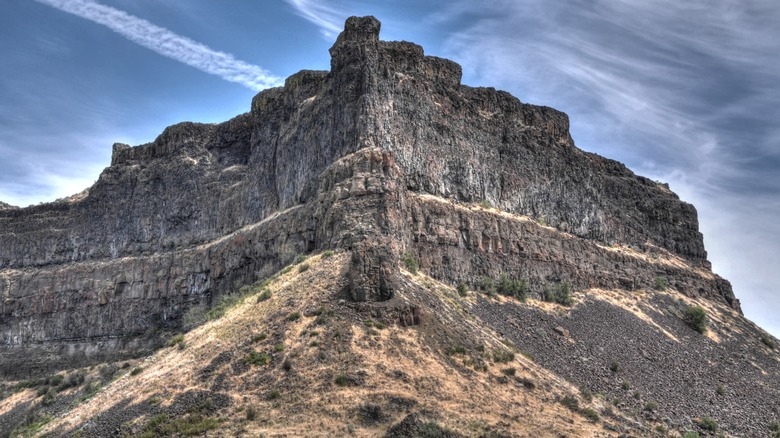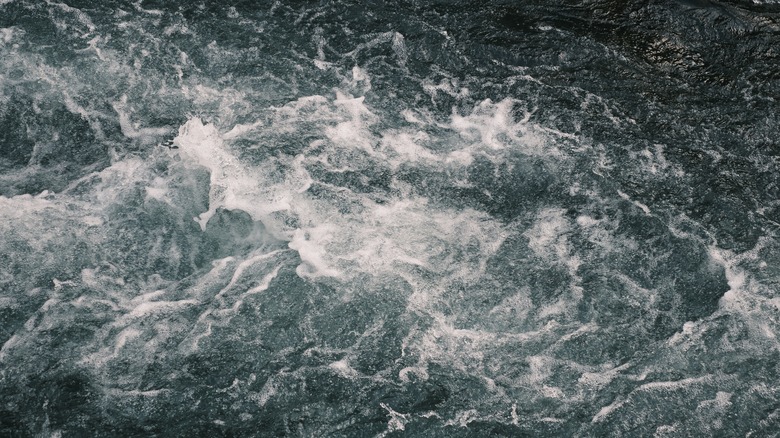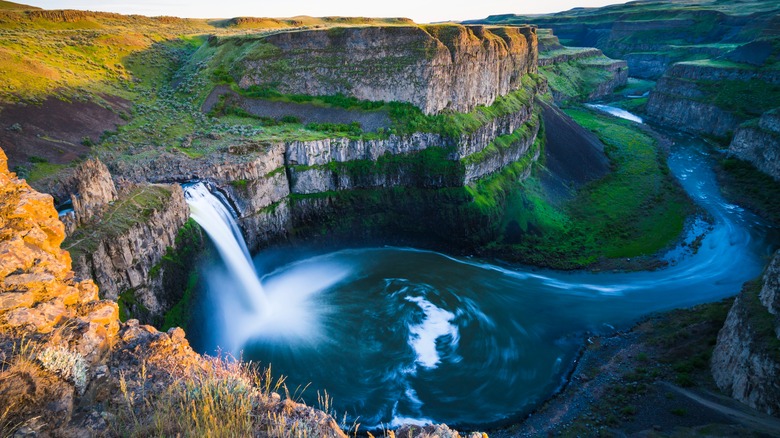How Massive Ice Age Era Floods Sculpted The State Of Washington
Born in 1882, J Harlen Bretz was a Seattle school teacher turned geologist who came up with an extraordinary theory (via HistoryLink). Per the Washington State Historical Society, Bretz traveled to Eastern Washington to research and explore the area in 1922. He subsequently named the region's geology "The Channeled Scablands." Bretz was fascinated with its distinct terrain and stated, "Like great scars marring the otherwise fair face of the plateau are these elongated tracts of bare, or nearly bare, black rock carved into mazes of buttes and canyons." However, he questioned how and why these plateaus formed in the first place.
The Washington State Department of Natural Resources reports that Bretz quickly ruled out erosion. He concluded that only a powerful force could chisel the landscape. Ultimately, the region's dry waterfalls and large potholes led Bretz to hypothesize that massive floods were to blame (per the Washington State Historical Society). He explained, "I could conceive of no geological process of erosion to make this topography except huge, violent rivers of glacial meltwater...It was a debacle which swept the Columbia Plateau." Bretz published his theory in 1923 and received contempt and uncertainty from his fellow geologists.
It took years for geologists to believe in J Harlen Bretz's theory
Smithsonian Magazine explains that J Harlen Bretz's theory that a flood had formed The Channeled Scablands was deemed impossible. It simply did not conform with what geologists believed during the 1920s. Bretz also surmised that these floods were brief, and it was difficult for his colleagues to accept that Eastern Washington's topography had changed instantly instead of gradually (per the Washington State Historical Society). The Washington State Department of Natural Resources noted that Bretz's colleagues also questioned where the water from these supposed floods had originated. Bretz was admittedly unsure but said the source could have been ice sheets from the last ice age.
Nevertheless, Smithsonian Magazine states that geologists did not accept Bretz's theory until the 1970s. Per HistoryLink, this was primarily due to technological innovations such as aerial photography and satellite photos. These proved that a flood had occurred at one point in time. In addition, the Washington State Historical Society writes that a geologist named Joseph Thomas Pardee had a solid argument for the source of the flood waters: Lake Missoula. According to The Washington State Department of Natural Resources, Lake Missoula was a glacial lake formed during the last Ice Age. As a result, the floods were named the Spokane floods or the Missoula floods.
The after-effects of the Missoula flood
Per The Washington State Department of Natural Resources, glacial Lake Missoula was over 200 miles long and 2,000 feet deep. Furthermore, it extended from Idaho to Montana. Smithsonian Magazine writes that between 14,000 and 18,200 years ago, the lake's natural dam ruptured, leading to the final form of The Channeled Scablands. However, this was not a one-time process; the floods occurred multiple times throughout thousands of years (per HistoryLink). The water traveled into Eastern Washington at 80 mph and moved boulders and sediment. So intense were these floods that geologists now refer to them as "megafloods."
According to HistoryLink, these Ice Age floods traversed 16,000 miles of the Pacific Northwest. They affected the Spokane area and led to the creation of the Dry Falls, the Lake Lenore Caves, and the Palouse Falls, amongst many others (via The Washington State Department of Natural Resources). The Washington State Historical Society reports that J Harlen Bretz was vindicated before his death in 1981 (via HistoryLink). He received a Penrose Medal from the Geological Society in 1979. A plaque dedicated to Bretz now stands outside of the Dry Falls Visitor Center. It reads, "Ideas without precedent are generally looked upon with disfavor and men are shocked if their conceptions of an orderly world are challenged."


